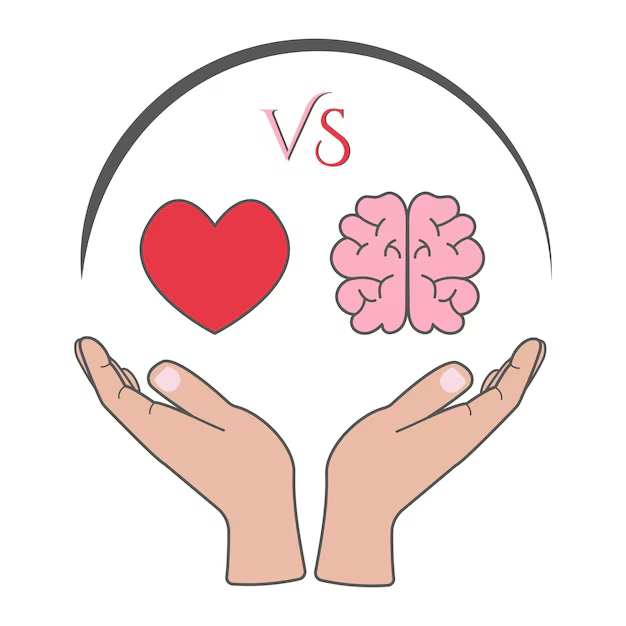Understanding the Foundation of Personalized Wellness
Personalized wellness recognizes that there’s no one-size-fits-all approach to health. Factors like genetics, lifestyle, environment, and personal preferences all play a crucial role in determining what truly works for an individual. This means moving away from generic diet plans or workout routines and focusing on strategies that align with your specific needs and goals. The rise of personalized medicine and readily available health data through wearable technology increasingly empowers individuals to become active participants in their own well-being.
Assessing Your Current State
Before diving into new routines, take an honest look at your current lifestyle. Ask yourself:
- What are my current energy levels throughout the day?
- How well am I sleeping?
- What are my stress levels like?
- What are my current eating habits?
- How much physical activity do I get each week?
- What activities bring me joy and relaxation?
Answering these questions will provide a baseline for measuring progress and identifying areas that need the most attention. Consider using a journal or app to track your habits and mood over a week or two for a more objective assessment.
Building Your Personalized Wellness Routine: A Step-by-Step Guide
Step 1: Define Your Wellness Goals
What does "wellness" mean to *you*? Is it about reducing stress, improving your fitness, eating healthier, or cultivating more joy in your life? Be specific and realistic. Instead of "I want to be healthier," try "I want to be able to run a 5k without getting winded," or "I want to feel less stressed at work."
Step 2: Choose Your Pillars of Wellness
Consider these key areas and how you want to improve in each:
- Nutrition: Focus on whole, unprocessed foods that nourish your body. Experiment with recipes and meal planning to make healthy eating enjoyable. Consider consulting a registered dietitian or nutritionist for personalized guidance.
- Physical Activity: Find activities you genuinely enjoy, whether it's dancing, hiking, swimming, or yoga. Aim for at least 150 minutes of moderate-intensity aerobic activity or 75 minutes of vigorous-intensity aerobic activity per week, along with muscle-strengthening exercises at least two days a week. You can check out guidelines from the Centers for Disease Control and Prevention (CDC).
- Sleep: Prioritize quality sleep by establishing a consistent sleep schedule, creating a relaxing bedtime routine, and optimizing your sleep environment. Aim for 7-9 hours of sleep per night.
- Stress Management: Explore various stress-reducing techniques such as meditation, deep breathing exercises, yoga, spending time in nature, or engaging in hobbies you enjoy.
- Mindfulness: Practice being present in the moment and paying attention to your thoughts and feelings without judgment. Mindfulness can be incorporated into daily activities such as eating, walking, or simply taking a few deep breaths.
- Social Connection: Nurture your relationships with loved ones and engage in activities that foster a sense of community.
Step 3: Start Small and Be Consistent
Don't try to overhaul your entire life overnight. Instead, focus on making small, gradual changes that are sustainable in the long run. For example, start by adding one serving of vegetables to each meal, walking for 30 minutes three times a week, or practicing mindfulness for 5 minutes each day. Consistency is key to building healthy habits.
Step 4: Track Your Progress and Adjust as Needed
Keep track of your progress by journaling, using a fitness tracker, or working with a wellness coach. Regularly evaluate your routine and make adjustments as needed based on your results and how you're feeling. Don't be afraid to experiment and try new things until you find what works best for you. Pay attention to how different foods affect your energy levels, how different types of exercise impact your mood, and how different stress management techniques help you relax. The World Health Organization provides guidelines on measuring progress toward health goals WHO Data.
Step 5: Be Patient and Kind to Yourself
Building a personalized wellness routine is a journey, not a destination. There will be ups and downs along the way. Be patient with yourself, celebrate your successes, and learn from your setbacks. Remember that progress, not perfection, is the goal. Don't compare yourself to others, and focus on creating a routine that supports your unique needs and goals.
Practical Guidance: Evaluating Wellness Options
The wellness industry is flooded with products, services, and information. It's crucial to be discerning and choose options that are evidence-based and aligned with your values. Here's how to evaluate different wellness options:
- Research the Source: Is the information coming from a reputable source? Look for evidence-based information from qualified professionals such as doctors, registered dietitians, and certified trainers. Be wary of claims that sound too good to be true or that are based on anecdotal evidence.
- Consider the Cost: Wellness products and services can range from free to very expensive. Consider your budget and prioritize options that provide the most value for your money. There are many free or low-cost resources available, such as online workout videos, meditation apps, and community fitness classes.
- Read Reviews: Before trying a new product or service, read reviews from other users to get an idea of their experiences. However, keep in mind that everyone's experience is different, so don't rely solely on reviews to make your decision.
- Talk to a Professional: If you have any underlying health conditions, consult with your doctor before starting a new wellness routine. They can provide personalized guidance and help you identify any potential risks.
Example: Evaluating a New Diet
Let's say you're considering trying the keto diet. Before jumping in, ask yourself:
- What are the potential benefits and risks of the keto diet?
- Is it sustainable for my lifestyle and food preferences?
- What are the long-term health implications of the keto diet?
- Have I consulted with a doctor or registered dietitian about whether the keto diet is right for me?
Do your research, weigh the pros and cons, and make an informed decision that's based on your individual needs and goals.
Long-Term Considerations for Sustaining Your Wellness Routine
Creating a personalized wellness routine is just the first step. The real challenge is sustaining it over the long term. Here are some long-term considerations to keep in mind:
- Maintenance Requirements: Some wellness practices may require ongoing maintenance, such as regular doctor's appointments, therapy sessions, or supplement purchases. Factor these costs into your budget and plan accordingly.
- Recurring Responsibilities: Building healthy habits requires ongoing effort and commitment. Make time in your schedule for your wellness routine and treat it as a non-negotiable appointment.
- Adaptability: Life is constantly changing, so your wellness routine needs to be adaptable. Be prepared to adjust your routine as your needs and goals evolve. For example, if you get injured, you may need to modify your exercise routine.
- Support System: Having a strong support system can help you stay motivated and accountable. Surround yourself with people who support your wellness goals and encourage you to stay on track.
- Prevention: A strong wellness routine should ideally prevent future health problems, like diabetes.
The Role of Technology in Personalized Wellness in 2025
Technology continues to play an increasingly important role in personalized wellness. Wearable devices, such as fitness trackers and smartwatches, can track your activity levels, sleep patterns, and heart rate, providing valuable data to help you monitor your progress and make informed decisions about your health. Mobile apps can provide personalized workout plans, meal plans, and mindfulness exercises. Telehealth platforms allow you to connect with healthcare professionals remotely, making it easier to access care from the comfort of your own home.
However, it's important to use technology mindfully and not let it dictate your entire wellness routine. Remember that technology is just a tool, and it's up to you to use it in a way that supports your individual needs and goals.
Data Table: Sample Wellness Activities and Time Commitment
| Activity | Frequency | Time Commitment (per session) | Benefits |
|---|---|---|---|
| Yoga | 3 times per week | 60 minutes | Improved flexibility, stress reduction, increased strength |
| Meditation | Daily | 10 minutes | Reduced anxiety, improved focus, enhanced self-awareness |
| Meal Planning | Weekly | 30 minutes | Healthier eating habits, reduced food waste, saves time during the week |
| Walking | 5 times per week | 30 minutes | Improved cardiovascular health, increased energy levels, mood boost |
| Strength Training | 2 times per week | 45 minutes | Increased muscle mass, improved bone density, enhanced metabolism |
FAQ: Frequently Asked Questions About Personalized Wellness
- Q: How do I know if a wellness trend is right for me?
- A: Research the trend thoroughly, consider your individual needs and goals, and consult with a healthcare professional if needed. Don't blindly follow trends without understanding the potential risks and benefits.
- Q: What if I don't have time for a full wellness routine?
- A: Even small changes can make a big difference. Focus on incorporating small, manageable habits into your daily routine, such as taking the stairs instead of the elevator, drinking more water, or practicing mindfulness for a few minutes each day. Every little bit counts.
- Q: How do I stay motivated to stick with my wellness routine?
- A: Set realistic goals, track your progress, reward yourself for your accomplishments, and find a support system. Remind yourself of the reasons why you started your wellness journey and focus on the positive benefits you're experiencing.
- Q: Can personalized wellness help with mental health?
- A: Yes! Many aspects of personalized wellness, such as mindfulness, stress management, and social connection, can have a significant positive impact on mental health. If you're struggling with mental health issues, consider seeking professional help from a therapist or counselor. NIMH resources can help you find mental health support.
- Q: What's the difference between personalized wellness and fad diets?
- A: Personalized wellness focuses on long-term sustainable habits tailored to individual needs, while fad diets are often short-term, restrictive, and unsustainable. Personalized wellness emphasizes overall well-being, while fad diets typically focus solely on weight loss.
Disclaimer: This information is for informational purposes only and should not be considered medical advice. Always consult with a qualified healthcare professional before making any changes to your diet, exercise routine, or treatment plan.
Sources:
- Centers for Disease Control and Prevention (CDC) - www.cdc.gov
- World Health Organization (WHO) - www.who.int
- National Institutes of Health (NIH) - www.nih.gov





